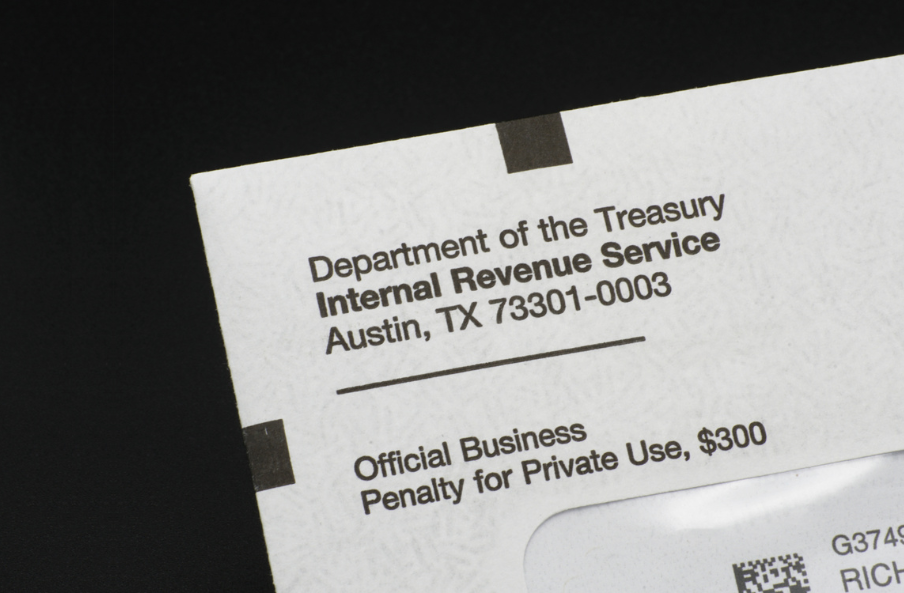A CP14 notice is not a reason for panic but can be a cause for concern. CP14 is also known as an IRS balance due notice – in other words, it is a reminder from the IRS to pay your dues and to ensure that you know you owe them money. This might be a minuscule amount to a few dollars, or something far more significant, requiring serious financial investment and a payment plan to tackle earnestly.
All taxpayers who owe money may receive a CP14 notice – even if they’ve recently paid their debt. It may take time for the IRS to process your payment, or the notice might have been sent before it was received and processed. In that case, consider contacting the IRS to clarify the situation or sign in to your online account via your SSN to determine whether you still owe a debt.
Simply log in to the official IRS account – never use your tax information or confidential personal details to log into an IRS account remotely or through email. If you have recently received a CP14 notice and didn’t know you owed a debt, to begin with, don’t panic. There’s plenty you can do.
What Does a CP14 Notice Mean for You?
First and foremost, if you haven’t paid your debt yet or didn’t know you owed a debt, to begin with, take a deep breath. The IRS will not burst through your front door and demand the keys to your car and home. Your first step should be to figure out what you owe. Usually, when the IRS begins sending notices of balance due, those notices come with a dollar amount highlighting your principal debt sans penalties and later accrued interest.
Also, to note is the tax assessment date, the official date on which the IRS determines your debt. This is important because the tax assessment date directly relates to your CSED or collection statute expiration date. In other words, the date your debt might potentially expire. To begin with, that date is ten years from the assessment date but can change due to several “tolling periods,” such as being overseas for some time, bankruptcy proceedings, military service, and more.
This is essential information to remember because the closer your debt’s expiration date draws near, the more the IRS will pressure you to pay your dues. That pressure can mount to liens and levies, at which point the IRS may begin demanding your house and car keys. If your tax assessment date was relatively recent, you have plenty of time to work things out with the IRS before they get antsy. But that does not mean you should dawdle.
Next Steps After Receiving a CP14 Notice
Debt forgiveness usually isn’t an option with the IRS. Like alimony payments and child support, the tax debt cannot be easily forgiven – even after filing for bankruptcy. Does that mean the IRS will pursue you to the ends of the earth? Well, they likely won’t have to – purposefully evading your tax debt can earn you jail time or additional civil charges, and even without litigation, the IRS won’t let the clock run out on your debt while you can’t pay.
Tolling periods include any time when the IRS cannot collect on your debt, including periods when you are financially unstable. That extends the debt’s duration. In other words, you’re stuck with your debt until you confront it. At that point, your options are limited – but not too limited. You have a few different ways to pay off your debt. The first and most straightforward is a single lump sum.
Suppose you can afford to write a check to pay your debt, do so as soon as possible. It might even be worth considering financing if needed – most financial institutions offer rates far superior to the IRS’ interest rate and additional penalties. You can opt for a payment plan if one big payment isn’t in the books. IRS payment plans come in two general flavors: short-term (less than 180 days) and long-term (more than 180 days).
While short-term payment plans can be structured into however many individual payments you would like, long-term payment plans involve a monthly installment plan that must be petitioned and agreed upon before the plan goes through. Most monthly installment plans with the IRS run for 72 months (six years) or the remainder on your debt’s timer before the CSED, whichever is less. If your debt totals $10,000 or less, you can opt for a 36-month payment plan, also known as a guaranteed installment agreement.
Debts above $10,000 but under $50,000 qualify for a streamlined installment agreement, provided you opt for direct debit pay (i.e., automatic withdrawals through a linked bank account). Any debts over $50,000 require a little more planning. At this point, the IRS requires you to fill out and mail in an installment agreement request alongside a detailed collection information statement. These documents help the IRS determine whether you have the financial means to pay your debt before its CSED.
What If You Can’t Pay?
If you can’t afford to pay your debt in monthly installments before it expires, a few other options are available. These include a partial payment plan and an offer in compromise. Opting for neither may force the IRS to resort to collection actions to coerce payment.
What Are IRS Collection Actions?
The IRS forces a taxpayer’s hand through two significant collection actions:
- The first is the federal tax lien, which restricts your liquidity. It forces all other creditors to accept the IRS’ claim as superior, meaning you can no longer secure loans or even pay off existing debts without first negotiating a temporary release or subordination through the IRS.
- The second is a tax levy, a claim of an asset or account for the IRS. The IRS can even go so far as to claim your home – although it will usually claim non-essential assets first and even start pulling from your monthly paychecks.
Negotiating an Offer in Compromise
If you do not have the financial means to pay your debt via a streamlined installment agreement, working with a tax professional may allow you to negotiate an offer in compromise. Like a non-streamlined installment agreement, an offer in compromise must be initiated via a particular form and collection information statement (OIC). The information in this statement must be completely accurate, and your offer must reflect your financial status.
The IRS will use your information, information on your returns, and other relevant data to determine your monthly reasonable collection potential and whether your offer matches this. If it does not, the IRS is unlikely to accept your offer. Working with tax professionals helps ensure that you formulate an offer the IRS is more likely to agree with. Offers in compromise can be a powerful tool to reduce massive tax debt, but they are never guaranteed. Your best bet is always to negotiate for the most amenable terms with the IRS.

